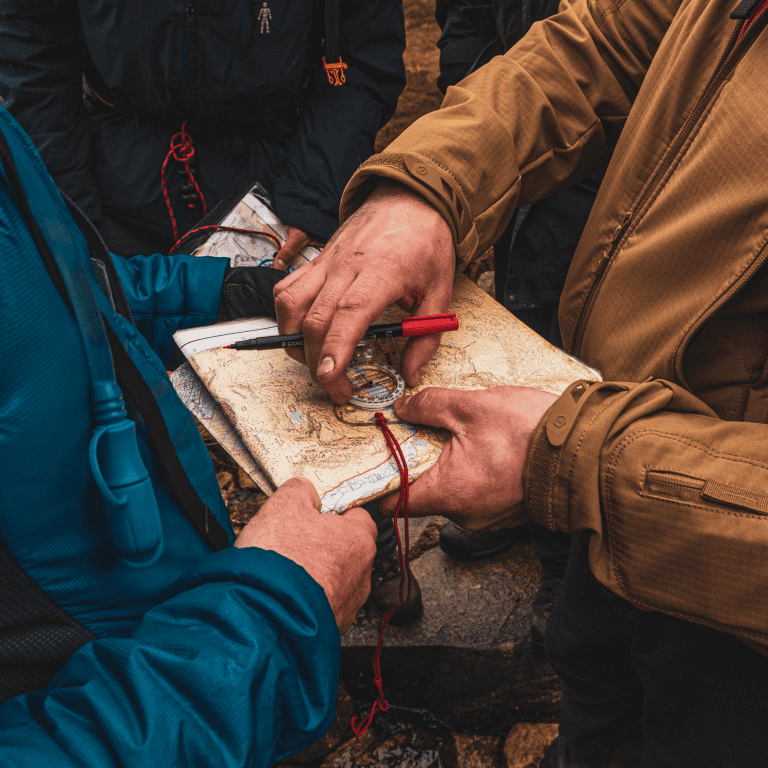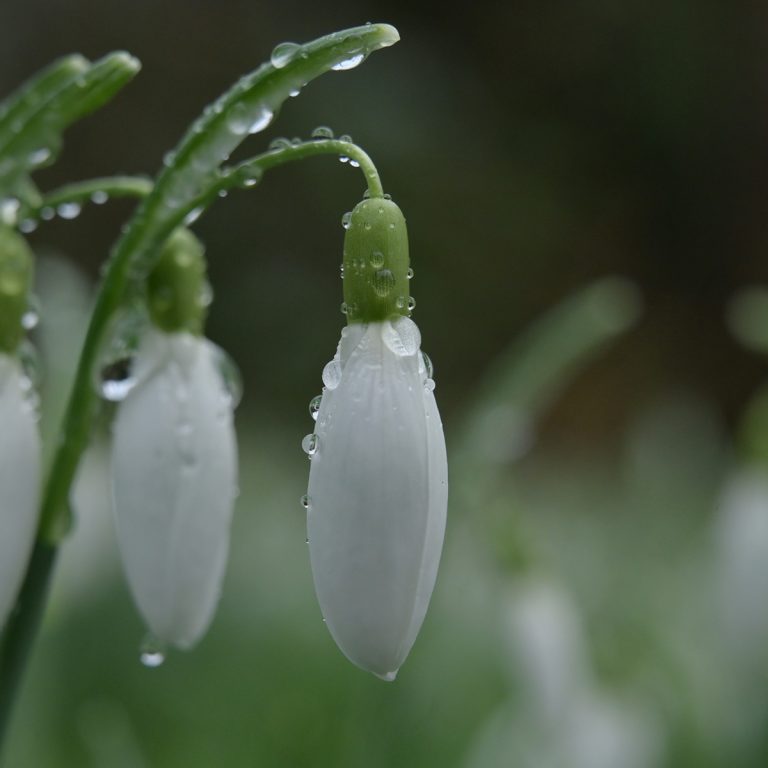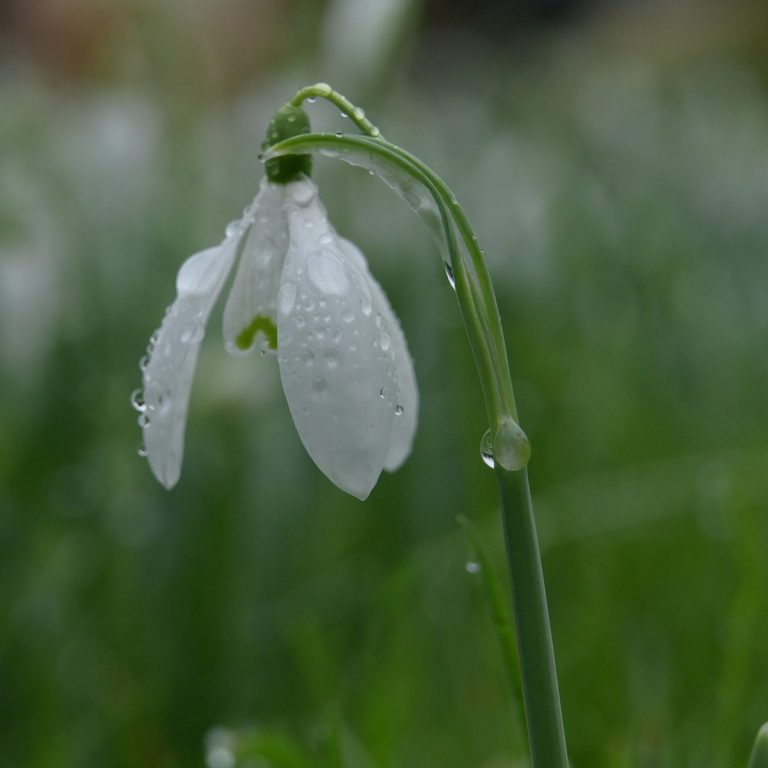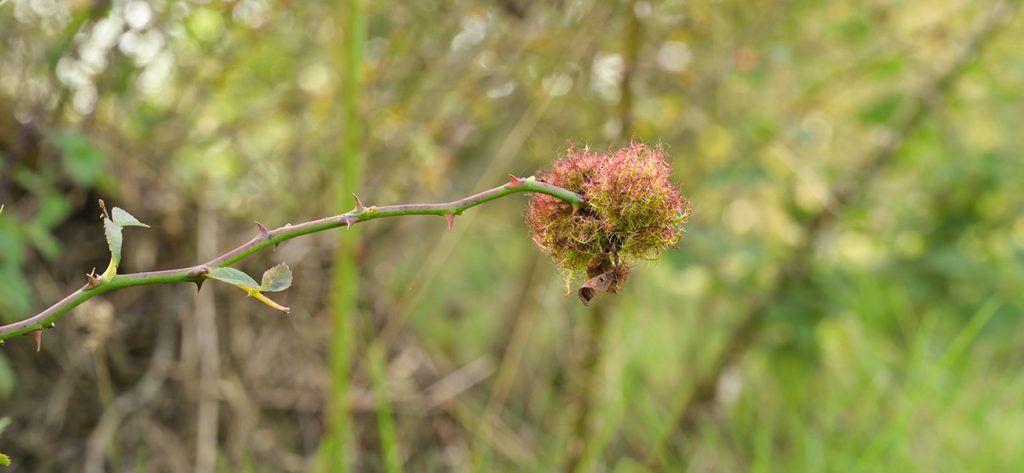
What is a Robin's pincushion?
6th September 2023
Late summer into early autumn is peak season for observing the Robin’s Pincushion, a red and spiky gall around the size of a small plum which is found on dog rose (Rosa canina) and some other rose species. If you have been out foraging rose hips, or even just admiring the colour which is popping from the hedgerows here in the UK, you have possibly seen these intriguing growths on the wild rose stems. At one point I thought that they were just oddly developed flowers or fruits due to a genetic mutation or cross-pollination with local cultivars, but they are actually much more impressive than that.
What is a gall?
Galls as a whole are fascinating, John Wright recently described them in his book as “…structures on or modifications to plants, formed for the purpose of nurturing the offspring of another organism and built or formed by the plant on which it grows under the chemically supplied instructions of said organism.” Insect species form the majority of galls, but mites, fungi, nematodes, bacteria, viruses and sometimes other plants also use this method. Some galls have common names – Oak apples, Spangle gall, Pocket-plum for example. However the Latin names used to reference them are the name of the species which creates the gall, as the gall itself is essentially a home that the species has built for itself.
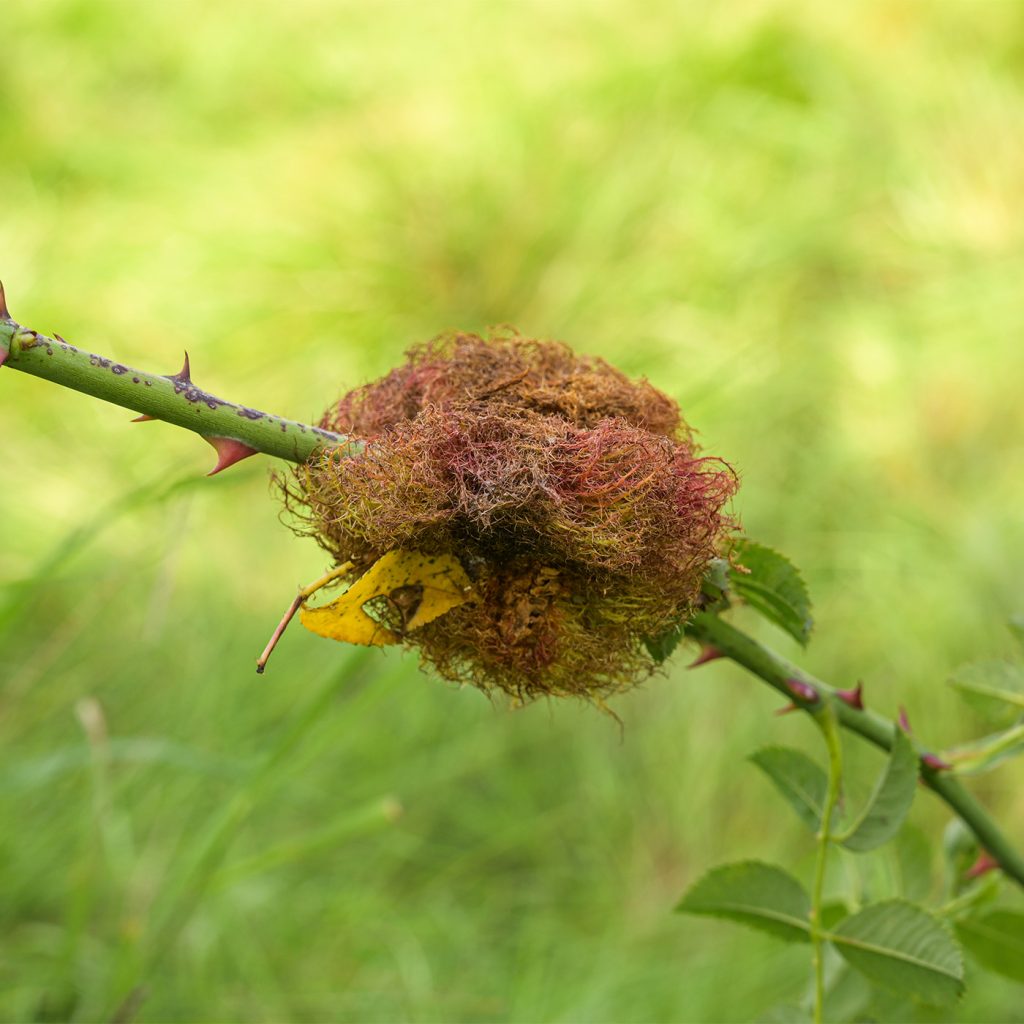
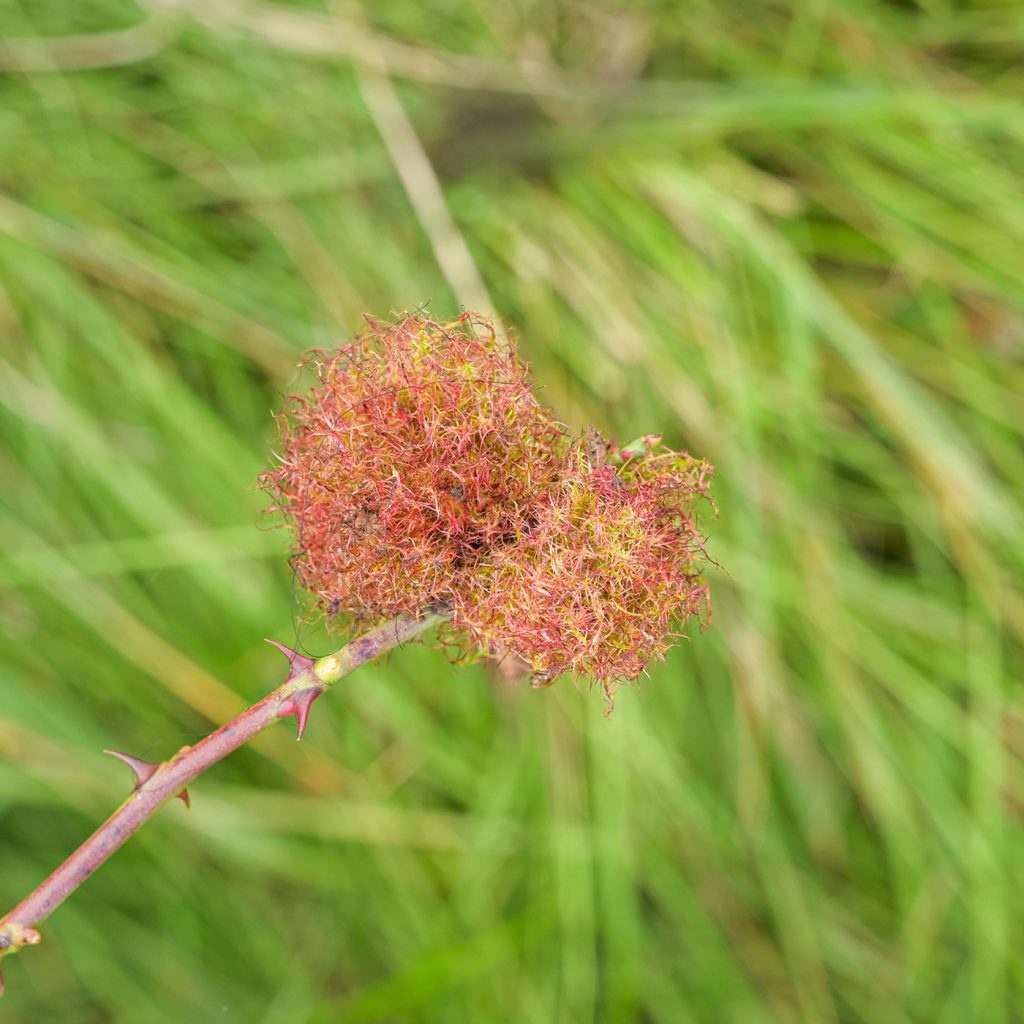
How is a Robin's pincushion formed?
The species which creates this gall is the tiny (4mm long) Bedeguar gall wasp Diplolepis rosae, the adult female wasp lays clusters of around 30 eggs in unopened leaf buds of rose plants. This all sounds fairly standard, but what happens next is the kind of magic which occurs on a daily basis right under our noses. The individual eggs release chemicals into the plant tissue which stimulates the plant cells and gives them instructions to grow into the gall. This pincushion gall is essentially a chamber surrounded by a woody structure with a spiky/fluffy moss-like coating which can be yellowish green to reddish pink. As the galls develop next to each other they will merge into one multi-chambered gall (the final plum-sized growth) which contains many larvae growing into adult wasps. They mature in August and over-winter as pupae before emerging from the gall the following year in spring. After the wasps emerge as adults, the gall will decompose and drop off the rose, having had very little effect on the plant.
With over a decade of experience working outside in the UK doing everything from dry stone walling to tree planting and carrying out wildlife surveys. Amy is our resident ecologist and wild food enthusiast, and also works as a consultant for various brands and wildlife organisations. Amy lives in North Wales.
A Life more Wild.
A Life More Wild is the philosophy which underpins everything we do.
It encompasses practical skills, personal development, community learning and a journey to live more intentionally.



